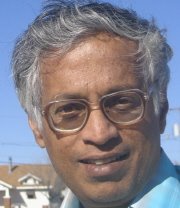Brain, the seat of memories and thoughts
Dr. K. Rohiniprasad
All of us have short-term and long- term memories that help us in daily life. Studies indicate that these two reside in different parts of the brain. Most of the ‘sophisticated’ long- term memory is located in the neocortex, indicating a higher level of human evolution. With age we tend to forget events and things that have just occurred even while we remember childhood memories vividly. This is probably due to inadequate blood supply to the hippocampus, (a structure within the limbic system that constitutes the mammalian brain). As a result the connection between the short and long-term memory worsens and it becomes more difficult to add new information to long-term memory. The localization of short and long-term memory in different parts of the brain is also probably indicated by the fact that waiters in restaurants have excellent short-term memory that help them remember complicated orders and a variety of customers’ faces and locations. Of course all this is very quickly forgotten since it is not added to the long-term memory.
Most of us sometimes try very hard to recall a name or a word in vain as the memory eludes us. The same thing suddenly pops up when we stop thinking and begin to think of something related. This “sideways” thinking perhaps merely helps to access the memory via a different neural path. As most students know it is easier to remember a telephone number or a formula if we read aloud or write it down. This indicates that it is easier for the brain to remember sights and sounds than thoughts.
All our memories, thoughts and feelings are of course generated within the brain although it is tempting to think of a mind that is different and distinct from the brain. Direct evidence to this distinction is lacking at the moment while most of the clinical studies point elsewhere. During neurosurgery for example, electrical stimulation of various parts of the cerebral cortex indicates specific brain sites associated with appetite, balance, breathing etc. Patients experienced snatches of memory, a smell from the past or a sound. Recent studies indicate that even the so-called out-of-body experiences are nothing but the result of electrical disturbances at some specific sites of the brain. This may disappoint mystics who talk of “astral” and “physical” bodies. In experiments of the above kind, the current flowing through an electrode located at a specific site was found to either begin or continue a memory trace. Many of us would not like to attribute our inner most and personal feelings to mere ‘electrical noise’ but it is difficult to disregard such experiments.
In the light of such experiments one tends to consider “spiritual” and “religious” experiences with a lot of scepticism. However sincere the believer is, most of the “visions” and disembodied “voices” that inspire him or her to believe in the “supernatural” might probably be little more than electrical signals of the above kind. Some years ago the present author came across a neighbour who would be seized by some religious frenzy exactly at 10AM on every Sunday as the family members surrounded him chanting religious hymns. It used to appear more like a brain “seizure” that could result in irreversible damage over a period of time. This has been mentioned to indicate the power of involuntary mental stimuli rather than to insult or denigrate the sentiments of anyone.


0 Comments:
Post a Comment
<< Home